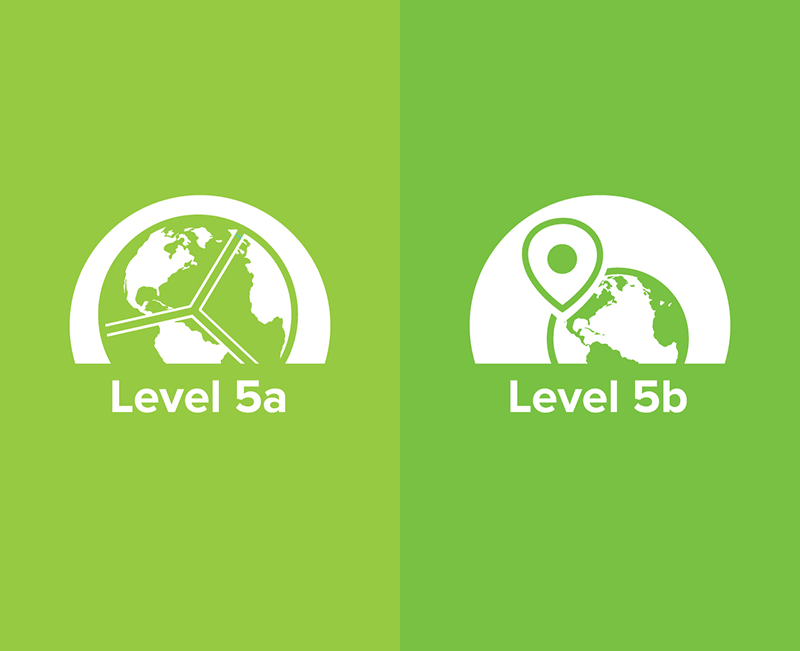Journey 2050 Lesson 5: Land Use (Grades 9-12)
Students will recognize that arable land (ideal land for growing crops) is a limited resource, identify best management practices that can be applied to every stakeholder’s land-use decisions; and analyze and discuss the impacts of food waste on our environment.

Background
Lesson Activities
Recommended Companion Resources
Credits
Author
Lindsey Verhaeghe, Andrea Gardner, Debra Spielmaker, and Sara Hunt | National Center for Agricultural Literacy (NCAL) and Nutrien
Acknowledgements
The Journey 2050 program was originally developed by Nutrien in collaboration with Calgary Stampede, Alberta Canola Producers Commission, Nutrients for Life Foundation, and Agriculture in the Classroom Canada. Authors and contributors were drawn from each of these organizations under the direction of Lindsey Verhaeghe (Nutrien) and Robyn Kurbel (Calgary Stampede.) The lessons were updated and revised in 2017 with contributions from the original J2050 Steering Committee, the National Center for Agricultural Literacy, and the National Agriculture in the Classroom Organization.
Sources
- http://data.worldbank.org/indicator/AG.LND.ARBL.ZS
- http://data.worldbank.org/indicator/AG.LND.AGRI.ZS
- http://www.tranquileye.com/clock/
- http://water.usgs.gov/edu/earthhowmuch.html
- http://www.worldfooddayusa.org/food_waste_the_facts
- http://data.worldbank.org/indicator/AG.LND.AGRI.ZS
- http://www.worldometers.info/world-population/population-by-country/
Standards
National Content Area Standards
- Social Studies – Economics
- Economics Standard 1 (Grades 9-12): Scarcity
- Objective (Grades 9-12): Identify what they gain and what they give up when they make choices.
- Economics Standard 2 (Grades 9-12): Decision Making
- Objective (Grades 9-12): Make effective decisions as consumers, producers, savers, investors, and citizens.
- Economics Standard 15 (Grades 9-12): Economic Growth
- Objective (Grades 9-12): Predict the consequences of investment decisions made by individuals, businesses, and governments.
- Economics Standard 1 (Grades 9-12): Scarcity
- Social Studies – History
- NCSS 8 (Grades 9-12): Science, Technology, and Society
- Objective 2: Science and technology have had both positive and negative impacts upon individuals, societies, and the environment in the past and present.
- Objective 9: Science, technology, and their consequences are unevenly available across the globe.
- Objective 10: Science and technology have contributed to making the world increasingly interdependent.
- Objective 11: That achievements in science and technology are increasing at a rapid pace and can have both planned and unanticipated consequences.
- Objective 12: Developments in science and technology may help to address global issues.
- NCSS 9 (Grades 9-12): Global Connections
- Objective 4: The actions of people, communities, and nations have both short-and long-term effects on the biosphere and its ability to sustain life.
- NCSS 3 (Grades 9-12): People, Places, and Environments
- Objective 3: Consequences of changes in regional and global physical systems, such as seasons, climate, and weather, and the water cycle.
- NCSS 8 (Grades 9-12): Science, Technology, and Society
- Science
- HS-ESS3: Earth and Human Activity
- HS-ESS3-3: Create a computational simulation to illustrate the relationships among the management of natural resources, the sustainability of human populations, and biodiversity.
- HS-LS2: Ecosystems: Interactions, Energy, and Dynamics
- HS-LS2-7: Design, evaluate, and refine a solution for reducing the impacts of human activities on the environment and biodiversity.
- HS-LS4: Biological Evolution: Unity and Diversity
- HS-LS4-6: Create or revise a simulation to test a solution to mitigate adverse impacts of human activity on biodiversity.
- APES Unit 5: Land and Water Use
- STB-1.A Introduction to Sustainability: Explain the concept of sustainability.
- STB-1.E Sustainable Agriculture: Describe sustainable agricultural and food production practices.
- HS-ESS3: Earth and Human Activity